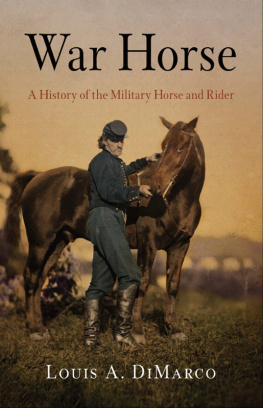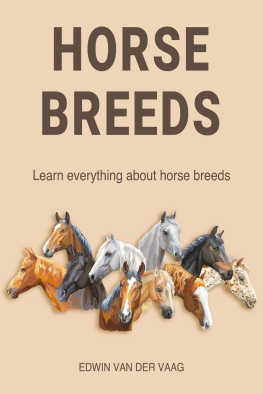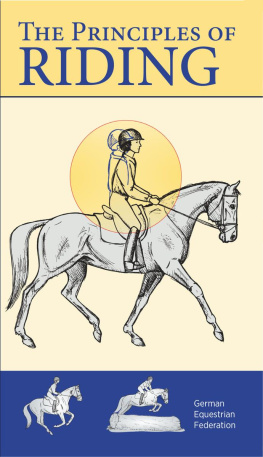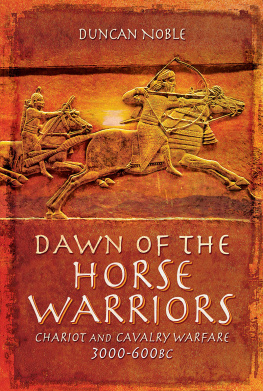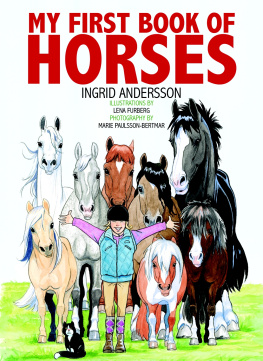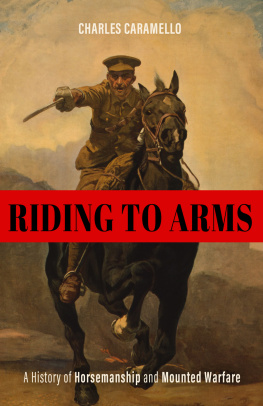
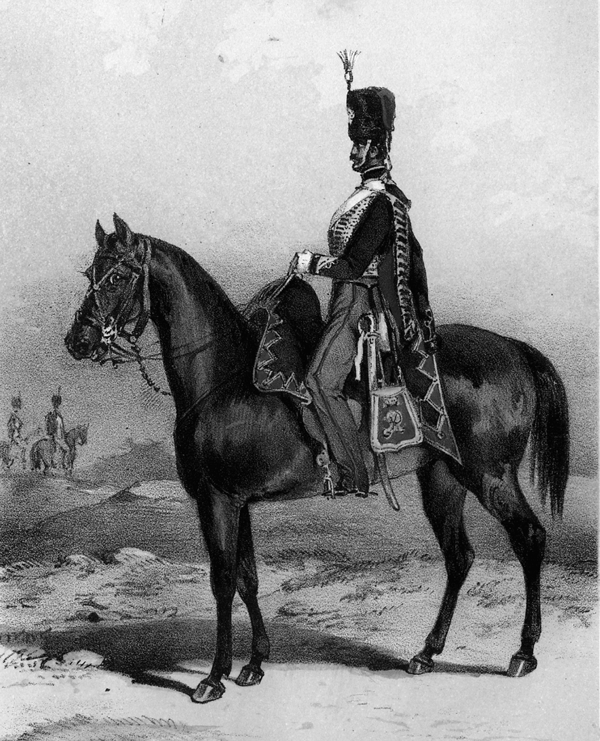
WAR HORSE
A HISTORY OF THE MILITARY HORSE AND RIDER
LOUIS A. DIMARCO

Frontis: The military seat as it is. A plummet line from the shoulder should fall an inch behind the heel. [Cavalry Regulations, Page 11] Saddling. The saddle is to be placed on the middle of the Horses back; the front of it the breadth of a hand behind the play of the shoulder. [Cavalry Regulations, Page 5.] From Cavalry: Its History and Tactics (1853) by Louis Edward Nolan, reprinted by Westholme Publishing, 2007.
Copyright 2008 Louis A. DiMarco
All rights reserved under International and Pan-American Copyright Conventions. No part of this book may be reproduced in any form or by any electronic or mechanical means, including information storage and retrieval systems, without permission in writing from the publisher, except by a reviewer who may quote brief passages in a review.
Westholme Publishing, LLC
904 Edgewood Road
Yardley, Pennsylvania 19067
Visit our Web site at www.westholmepublishing.com
ISBN: 978-1-59416-525-2 (electronic)
Also available in hardback.
Produced in the United States of America.
To my wife, Colonel Joyce P. DiMarco, whose love of soldiers and horses is the real inspiration for this work, and to my daughters Cara and Gina whose efforts maintaining our barn and small herd of equine partners permitted the completion of this project.
CONTENTS
INTRODUCTION
The war horse and rider were one of historys most enduring military fighting systems. They were a key to the success of Alexander the Great in the fourth century BC, and, likewise, were integral to British General Edmund Allenbys successful Palestine campaign in the same part of the world 2,200 years later. The similarities between Alexanders lance-armed companion cavalry and the Indian lancers of Allenbys cavalry divisions were far greater than the differences. The war horse and rider was a viable military weapons system for more than 3,000 years, far longer than any other military system. There were many reasons for this phenomenal endurance. One was that man-made technology could not outperform the horse as a means of transporting soldiers in battle until the middle of the twentieth century. Also, the horse is a large and powerful animal. As long as physical size and strength were a critical component of close combat fighting, the horse was an important con-tributor to combat power. The horse was not only a weapon that had a material effect on the battlefield, but also was a psychological weapon that by its mere presence could effect the morale of friendly and enemy troops. The physical presence of horses could inspire courage or instill uncontrollable fear. Even after technology gave soldiers firearms that provided protection from horses, it still took another half a century before the capabilities of technology were sufficient to erase the psychological impact of the horse in battle. The intent of this work is to study the long and fascinating history of the war horse and rider as a military weapons systempossibly the most important and least understood martial arm in military history.
This work examines the horse and rider as a weapons system used in battleit is not a battle history of cavalry. It reveals the slow and logical evolution of the horses employment in warfare. The chapters examine how horses were organized within the important armies of history, what type of arms were used in conjunction with horses, and what type of tactics directed the war horse and rider on the battlefield. However, weapons and tactics were only part of the success of mounted forces. The horse itself was also important. The physical characteristics of the horses, breeding programs, and training for military operations were all important. Horsemanship was also a critical component of effective mounted operations. The utility of the horse was greatly dependent on the riders skill under the stressful conditions of combat. Horse mastershipthe science of managing the health and welfare of horseswas also an important aspect of the success of mounted operations. An armys ability to manage its horses could be the difference between battles and campaigns won or lost.
The type of horse used for military operations is an important and much neglected aspect of military history. Much military history assumes generically that all military horses were the same. Such an assumption is akin to assuming all rifles were the same. For most of history, horses were described broadly as types. Horses within a type are common to a geographic area and broadly share some physical characteristics. Breeds are more specific than types. Specific breed identification requires not just careful management to achieve desired physical characteristics, but also detailed record keeping to document that management. Breed organization in its modern form does not appear until the seventeenth century, but even after that period important and recognizable types continued to influence military operations until the end of large-scale mounted military operations. The distinction between type and breed is important, but less so in military history because both terms are sufficient to identify and highlight the characteristics of the important war horses used by various armies over the ages.
The first chapters of this work set the tone for those that follow, establishing the fact that early mounted forces were certainly as equal in importance to infantryif not the premier military arm. Even without saddles and stirrups, mounted forces were a critical component of ancient warfare. The mounted military power of the Middle East was a force to which Europes only effective response was Alexander the Great. Rome, despite all its great achievements, was not a state that fielded particularly effective mounted forces, and this characteristic of the Roman military helped define the limits of the Empire.
During the Medieval period, mounted forces became unquestionably the most important military forces in Asia and Europe. But the European knight was a somewhat limited military tool that was only dominant in Europe because of the unique social and political conditions on the continent. The Eastern mounted forces, in contrast, were a true comprehensive military force. The Crusades provide evidence that the Eastern approach to employing the war horse was far superior to that of the knights of the West. The Central Asian steppe horse archers also demonstrated the superiority of the well-trained versatile horseman, using the horse as a firing platform as well as for shock action.
The seventeenth and eighteenth centuries witnessed the rise of military professionalism and resulted in the formation of very competent mounted military organizations in Western Europe for the first time since the Romans. Advances in riding techniques, training, and horse breeding were part of the overall advance of military professionalism. Scientific riding and horse training principles date from this period. Among horses, some of the first recognizable modern breeds, including the hot-blooded Andalusians of Spain and the various warmbloods of Germany, appear in military organizations during this period.
It was during this period that controlled mass cavalry charges against infantry were first deployed. Infantry began to develop the tactics and technology to defend against this kind of cavalry attack; however, the psychological impact of mounted formations on battlefields remained considerable. Fear was an importantpossibly the most importantaspect of employing war horses. Speed and timing were also keys to success. Despite infantry firearms and protective formations, charges by mounted forces were both common and had decisive effects.
Next page
